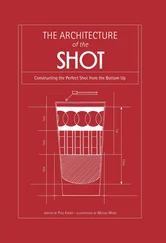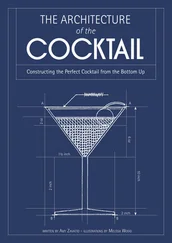Robert Blatchford - Not Guilty - A Defence of the Bottom Dog
Здесь есть возможность читать онлайн «Robert Blatchford - Not Guilty - A Defence of the Bottom Dog» — ознакомительный отрывок электронной книги совершенно бесплатно, а после прочтения отрывка купить полную версию. В некоторых случаях можно слушать аудио, скачать через торрент в формате fb2 и присутствует краткое содержание. Жанр: foreign_antique, foreign_prose, на английском языке. Описание произведения, (предисловие) а так же отзывы посетителей доступны на портале библиотеки ЛибКат.
- Название:Not Guilty: A Defence of the Bottom Dog
- Автор:
- Жанр:
- Год:неизвестен
- ISBN:нет данных
- Рейтинг книги:3 / 5. Голосов: 1
-
Избранное:Добавить в избранное
- Отзывы:
-
Ваша оценка:
- 60
- 1
- 2
- 3
- 4
- 5
Not Guilty: A Defence of the Bottom Dog: краткое содержание, описание и аннотация
Предлагаем к чтению аннотацию, описание, краткое содержание или предисловие (зависит от того, что написал сам автор книги «Not Guilty: A Defence of the Bottom Dog»). Если вы не нашли необходимую информацию о книге — напишите в комментариях, мы постараемся отыскать её.
Not Guilty: A Defence of the Bottom Dog — читать онлайн ознакомительный отрывок
Ниже представлен текст книги, разбитый по страницам. Система сохранения места последней прочитанной страницы, позволяет с удобством читать онлайн бесплатно книгу «Not Guilty: A Defence of the Bottom Dog», без необходимости каждый раз заново искать на чём Вы остановились. Поставьте закладку, и сможете в любой момент перейти на страницу, на которой закончили чтение.
Интервал:
Закладка:
Descent, or breed, does not work regularly. Any trait of any ancestor, beast or man, near or remote, may crop up suddenly in any new generation. A child may bear little likeness to its father or mother: it may be more like its great-grandfather, its uncle, or its aunt.
It is as though every dead fore-parent back to the dimmest horizon of time, were liable to put a ghostly finger in the pie, to mend or mar it.
Let us now use a simple illustration of the workings of heredity, variation, and atavism, or breeding back.
There is no need to trouble ourselves with the scientific explanations. What we have to understand is that children inherit qualities from their ancestors; that children vary from their ancestors and from each other; and that old types or old qualities may crop out suddenly and unexpectedly in a new generation. Knowing, as we do, that children inherit from their parents and fore-parents, the rest may be made, quite plain without a single scientific word.
In our illustration we will take for parents and children bottles, and for hereditary qualities beads of different colours.
Now, take a bottle of red beads, and call it male. Take a bottle of blue beads, and call it female.
From each bottle take a portion of beads; mix them in a third bottle and call it "child."
We have now a child of a red father and a blue mother; and we find that this child is not all red, nor all blue, but part red and part blue.
It is like the father, for it has red beads; it is like the mother, for it has blue beads.
It is unlike the father, for the father has no blue, and it is unlike the mother, for the mother has no red.
Here we have a simple illustration of "heredity" and "variation."
Now, could we blame the "child" bottle for having red and blue beads in it; or could we blame the "child" bottle for having no yellow and no green beads in it?
But that is an example of a simple mixture of two ancestral strains. We have to do with mixtures of millions of strains.
Let us carry our illustration forward another generation.
Take our blue and red "child" and marry him to the child of a black bottle and a yellow bottle.
This gives us a marriage between Red-Blue and Black-Yellow.
The "child" bottle mixed from these two bottles of double colours will contain four colours.
He will "inherit" from grandfather Red and grandmother Blue, from grandfather Black and grandmother Yellow, and from father Red-Blue and mother Black-Yellow.
He will be like the six fore-parents, but different from each of them.
Can we blame this "child" bottle for being made up of red, blue, black, and yellow? Can we blame it for having no purple nor white beads in its composition? No. These colours were mixed for the child, and not by it.
How could there be white or purple beads in this bottle, when there were no white nor purple beads in the bottles from which it was filled?
But what of the variation amongst brothers and sisters?
That is easily understood. If the four colours in the ancestral bottles are evenly mixed, the grandchildren bottles will vary from their ancestors, but not from each other.
As we know that brothers and sisters do vary from each other, we must conclude that the hereditary qualities are not evenly mixed.
For the scientific explanation of this fact I must refer you to The Germ Plasm , by Weissmann.
For our purposes it is enough to know that brothers and sisters do vary from each other, and that they so vary because the ancestral qualities are not evenly distributed amongst the "sperms" and the "ova." On this head our own knowledge and observation do not leave any room for doubt.
It is as if in the case of our marriage of Red-Blue and Black-Yellow there were three child-bottles, of which one got more red and yellow, one more blue and red, and one more yellow and blue than the others. So that the three brother-bottles would differ from their fore-parents and from each other.
And as it would be foolish to blame the second bottle for having less red in it than the first, so it is foolish to blame a human child for having less intellect or less industry than his brothers.
If you refer to the masterly description of the impregnation of the ova given in Haeckel's great work, The Evolution of Man , you will find that the heredity of brothers is largely a matter of accident. See the plate and explanation on page 130 in the first volume.
The "variation" in brothers and sisters is like the variation in the mixing of beads in our bottles.
It is as though we made several tartan plaids of the same four colours, but in different patterns.
It is like dealing hands of cards from a shuffled pack. There are four suits, but one hand may be rich in clubs, another in diamonds.
And who in a game of whist would blame his partner for holding no trumps in his hand? The partner could only play the trumps dealt out to him.
In no way can a child control the pre-natal shuffling or dealing of the ancestral pack.
Now, as to atavism, or breeding back. In the ancestral bottles called men and women there are millions of different kinds of beads. And it sometimes happens that a particular kind of bead (or quality) which has lain dormant for a long time – perhaps for a thousand years – will crop up in a new mixing that goes to make a "child-bottle," and so that child may be less like its own parents than like some ancestor who has been dead and forgotten for centuries.
In the case of the man with the seven ape muscles, mentioned by Darwin, the breeding back must have reached millions of years.
This "lying doggo," or inactive, of some hereditary trait, may be likened to the action of a kaleidoscope. We do not see all the fragments of coloured glass at every turn. But they are all there.
We do not see the same pattern twice; yet the patterns are made almost of the same colours and the same pieces.
And now I think we have got a clear idea of the meanings of the words "heredity," "variation," and "atavism," and the most timid reader will not be afraid of them any more.
There is no need, for our purpose, to wrestle with severe science. The reader may find for himself all about "pangenesis" in Darwin, and about the "germ plasm" in Weissmann. Here we will not tax our memories with such weird words as "biophors," "gemmules," "ids," "idents," and "determinants." Our similes of beads, tartans, and cards will serve us well enough.
The only objection to our similes is that they are too simple.
The mixture of bloods in descent is very much more extensive | than our mixture of cards or beads.
If we trace a child's descent back only four generations we find that he has no less than thirty fore-parents belonging to sixteen different families. Another generation would reach thirty-two families. If we go back to twenty generations we find the number of families drawn upon to be over a million.
But Darwin speaks of "thousands of generations." Does not! this suggest the wonderful possibilities of variation and atavism?
Imagine the variety of character and physique in a city like London. Then remember that each one of us is descended from more ancestors, and of much wider varieties, than all the population of London. And to hold a man answerable for his inheritance from those motley myriads of men and women is to hold him answerable for the natures and the actions of millions of human beings whom he never saw, of whom he never heard.
We all know that the different races of men differ from each other in colour, in features, and in capacity. We have only to think for a little of the Japanese, the Americans, the Spaniards, and the Swedes, to feel the full force of the term "racial characteristics."
Читать дальшеИнтервал:
Закладка:
Похожие книги на «Not Guilty: A Defence of the Bottom Dog»
Представляем Вашему вниманию похожие книги на «Not Guilty: A Defence of the Bottom Dog» списком для выбора. Мы отобрали схожую по названию и смыслу литературу в надежде предоставить читателям больше вариантов отыскать новые, интересные, ещё непрочитанные произведения.
Обсуждение, отзывы о книге «Not Guilty: A Defence of the Bottom Dog» и просто собственные мнения читателей. Оставьте ваши комментарии, напишите, что Вы думаете о произведении, его смысле или главных героях. Укажите что конкретно понравилось, а что нет, и почему Вы так считаете.












